
Sir John Robert Steell was a Scottish sculptor. He modelled many of the leading figures of Scottish history and culture, and is best known for a number of sculptures displayed in Edinburgh, including the statue of Sir Walter Scott at the base of the Scott Monument.

James Pittendrigh MacGillivray was a Scottish sculptor. He was also a keen artist, musician and poet. He was born in Inverurie, Aberdeenshire, the son of a sculptor, and studied under William Brodie and John Mossman. His works include public statues of Robert Burns in Irvine, Lord Byron in Aberdeen, the 3rd Marquess of Bute in Cardiff, John Knox in Edinburgh's St Giles Cathedral, and William Ewart Gladstone in Coates Crescent Gardens, Edinburgh.

The Kelvin Hall, located on Argyle Street in Glasgow, Scotland, is one of the largest exhibition centres in Britain and now a mixed-use arts and sports venue that opened as an exhibition venue in 1927. It has also been used as a concert hall, home to the Kelvin Hall International Sports Arena to 2014, and from 1988 to 2010, Glasgow's Museum of Transport. As part of the economic redevelopment of Greater Glasgow promoted by the Scottish Development Agency and local authorities to enhance the city's tourist infrastructure and to attract further national and international conferences, the Scottish Exhibition and Conference Centre was designed as the Hall's successor for exhibitions and entertainments, built in 1983 and opened on the nearby Queen's Dock in 1985 with an exhibition area equal in size to the Kelvin Hall but with the benefit of extensive car parks and land for other complementary buildings. The Hall is protected as a category B listed building, and is served by city bus services and by Kelvinhall subway station.

Thomas Smith Tait was a Scottish modernist architect. He designed a number of buildings around the world in Art Deco and Streamline Moderne styles, notably St. Andrew's House on Calton Hill, Edinburgh, and the pylons for Sydney Harbour Bridge.
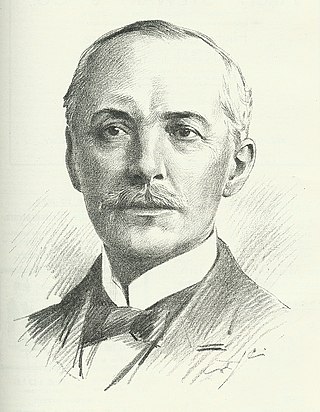
Sir John James Burnet was a Scottish Edwardian architect who was noted for a number of prominent buildings in Glasgow and London. He was the son of the architect John Burnet, and later went into partnership with his father, joining an architectural firm which would become an influential force in British Modern architecture in the 20th century.

The Empire Exhibition was an international Exhibition held at Bellahouston Park in Glasgow, Scotland, from May to December 1938.
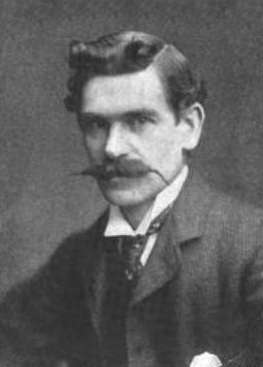
James Miller (1860–1947) was a Scottish architect, recognised for his commercial architecture in Glasgow and for his Scottish railway stations. Notable among these are the American-influenced Union Bank building at 110–20 St Vincent Street; his 1901–1905 extensions to Glasgow Central railway station; and Wemyss Bay railway station on the Firth of Clyde. His lengthy career resulted in a wide range of building types, and, with the assistance of skilled draughtsmen such as Richard M Gunn, he adapted his designs to changing tastes and new architectural materials and technologies.
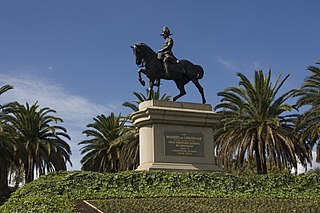
William Birnie Rhind RSA (1853–1933) was a Scottish sculptor.

Benjamin Hall Blyth FRSE, often called Benjamin Blyth II, was a Scottish civil engineer.

Edward Balliol or Edward de Balliol was a claimant to the Scottish throne during the Second War of Scottish Independence. With English help, he ruled parts of the kingdom from 1332 to 1356.
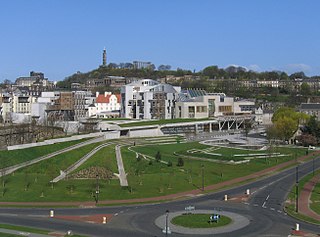
The architecture of Scotland includes all human building within the modern borders of Scotland, from the Neolithic era to the present day. The earliest surviving houses go back around 9500 years, and the first villages 6000 years: Skara Brae on the Mainland of Orkney being the earliest preserved example in Europe. Crannogs, roundhouses, each built on an artificial island, date from the Bronze Age and stone buildings called Atlantic roundhouses and larger earthwork hill forts from the Iron Age. The arrival of the Romans from about 71 AD led to the creation of forts like that at Trimontium, and a continuous fortification between the Firth of Forth and the Firth of Clyde known as the Antonine Wall, built in the second century AD. Beyond Roman influence, there is evidence of wheelhouses and underground souterrains. After the departure of the Romans there were a series of nucleated hill forts, often utilising major geographical features, as at Dunadd and Dunbarton.

Sir George Washington Browne was a Scottish architect. He was born in Glasgow, and trained there and in London. He spent most of his career in Edinburgh, although his work can be found throughout Scotland and beyond. He was involved in nearly 300 projects, including many public and commercial buildings. One of his most notable buildings is Edinburgh's Central Library, and he became recognised as an authority on library planning and design. He came to national attention after winning a competition to design a bridge over the River Thames in London, although this was never realised. He was the first architect to be elected as President of the Royal Scottish Academy. He also served as President of the Edinburgh Architectural Association, and was instrumental in setting up the Royal Fine Art Commission for Scotland.
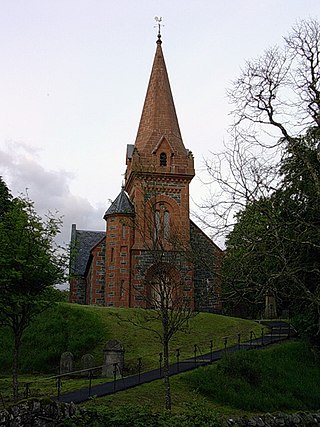
John Lessels was a Scottish architect and artist, active in Edinburgh and the Scottish Borders .

Thomas Lennox Watson, FRIBA, was a Scottish architect and interior designer. Born in Glasgow, he submitted designs for the city's City Chambers (1880) and Kelvingrove Art Gallery (1892) competitions, but was unsuccessful.

Sir Andrew Thomas Taylor, JP, RCA, FSA, FRIBA was a British architect and councillor. He was born in Edinburgh, Scotland, and practised architecture in Scotland and London before emigrating to Montreal, Quebec, in 1883, where he designed many of the buildings of McGill University. He retired from architecture in 1904 and returned to London, where he served on London County Council from 1908 to 1926. He was knighted for his political services in 1926.

Archibald Campbell Douglas was a Scottish architect based primarily in Glasgow. He designed many churches in Glasgow and Edinburgh, especially those for the Free Church of Scotland.

Perth City Hall is a civic building in King Edward Street, Perth, Scotland. Built in 1914, it is a Category B listed building.
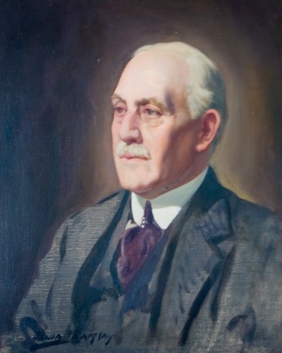
J. & G. Young was a Scottish architectural firm from Perth composed of John Young and his son, George. They were in business between 1885 and 1895, when John died. Their total number of works together numbers around fifteen, ranging from churches to public buildings.

John Honeyman was a Scottish architect. He designed several notable buildings in Scotland, mostly churches, and worked alongside Charles Rennie Mackintosh as a partner for several years.
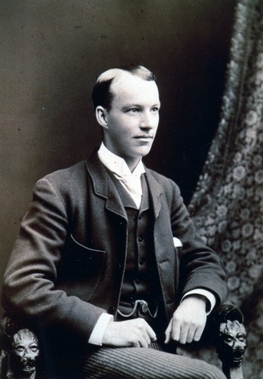
Henry Edward CliffordFRIBA was a Scottish architect, prominent in the late 19th and early 20th centuries. His design genre was wide, from churches to schools to golf clubhouses, but he was focussed in the Glasgow area and the west coast of Scotland.




















